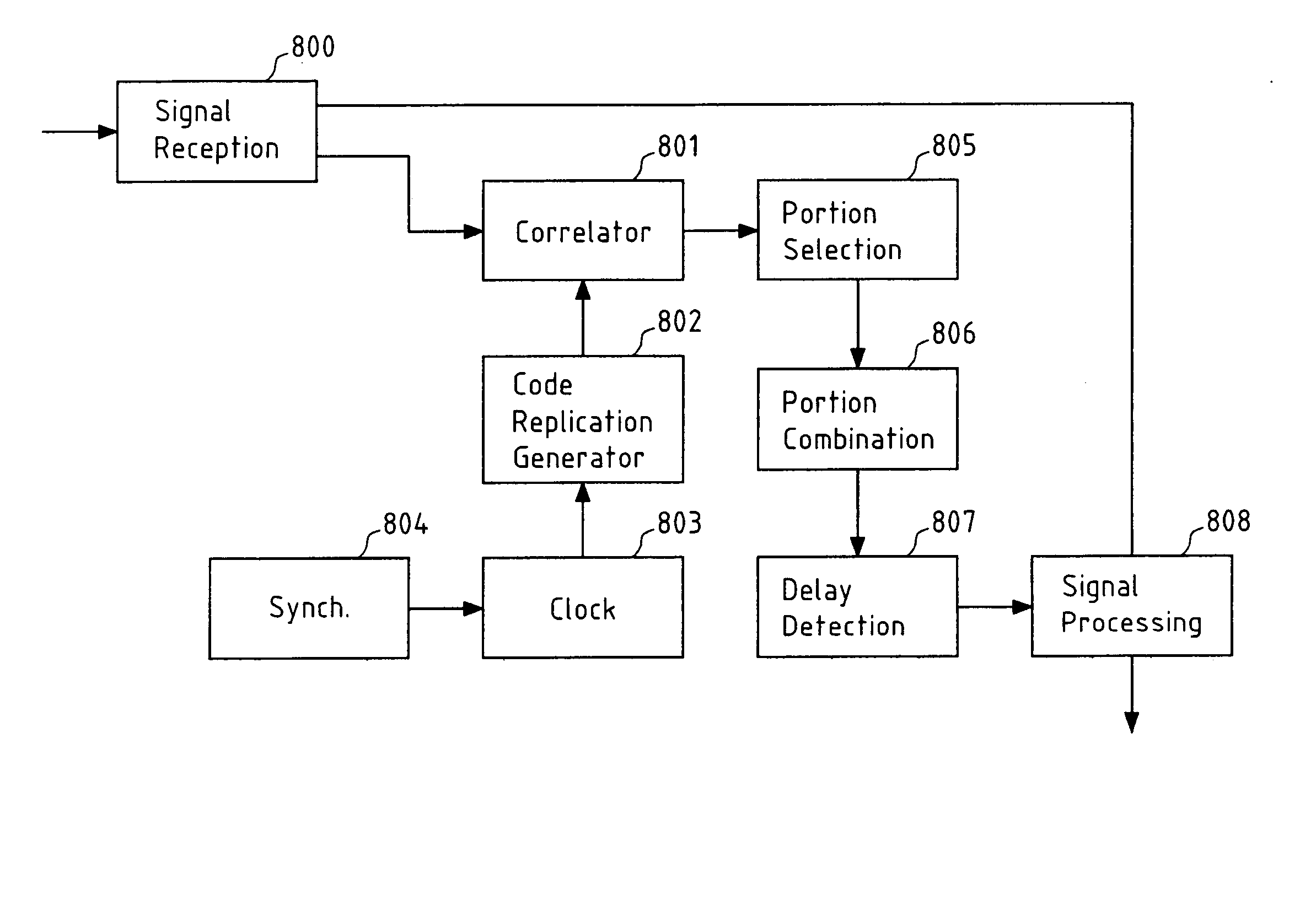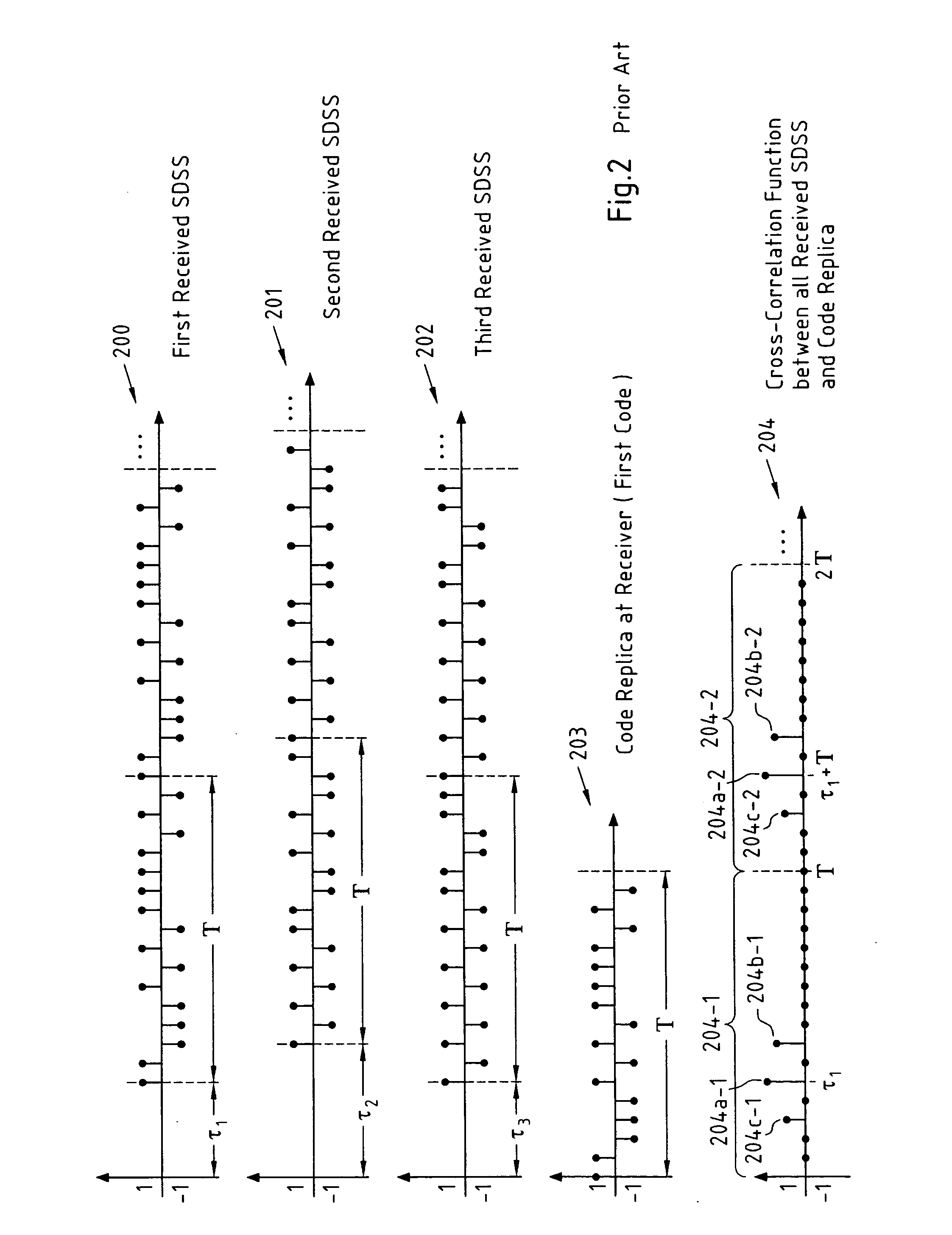Multiple access using different codes lengths for global navigation satellite systems
a global navigation satellite and code length technology, applied in the field of determining can solve the problems of attenuation and noise of the spread data symbol stream contained in the signal, and achieve the effect of improving the determination of the delay of a spread data symbol stream
- Summary
- Abstract
- Description
- Claims
- Application Information
AI Technical Summary
Benefits of technology
Problems solved by technology
Method used
Image
Examples
Embodiment Construction
[0049]FIG. 3 schematically illustrates the synthesis of a Cross-Correlation Function (CCF) in a multi-transmitter GNSS system according to the present invention. The first row of FIG. 3 shows a first received Spread Data Symbol Stream (SDSS) 300 that basically represents a delayed version of a first transmitted SDSS. Said first transmitted SDSS 300 is obtained by spreading a data symbol stream with a first code 302. In the first row of FIG. 3, only three repetitions of the code 302 of duration T each are depicted, wherein it is assumed that each repetition of the code spreads one data symbol. BPSK modulation is assumed, so that the symbol alphabet of the SDSS is {−1,1}. However, modulation is not mandatory. The SDSS then may be subject to pulse shaping and modulation on a carrier frequency, such as for instance the L1 carrier of a GPS system, and then is transmitted to a receiver over a channel that causes a first propagation delay τ1. Similarly, a second SDSS is transmitted by a se...
PUM
 Login to View More
Login to View More Abstract
Description
Claims
Application Information
 Login to View More
Login to View More - R&D
- Intellectual Property
- Life Sciences
- Materials
- Tech Scout
- Unparalleled Data Quality
- Higher Quality Content
- 60% Fewer Hallucinations
Browse by: Latest US Patents, China's latest patents, Technical Efficacy Thesaurus, Application Domain, Technology Topic, Popular Technical Reports.
© 2025 PatSnap. All rights reserved.Legal|Privacy policy|Modern Slavery Act Transparency Statement|Sitemap|About US| Contact US: help@patsnap.com



